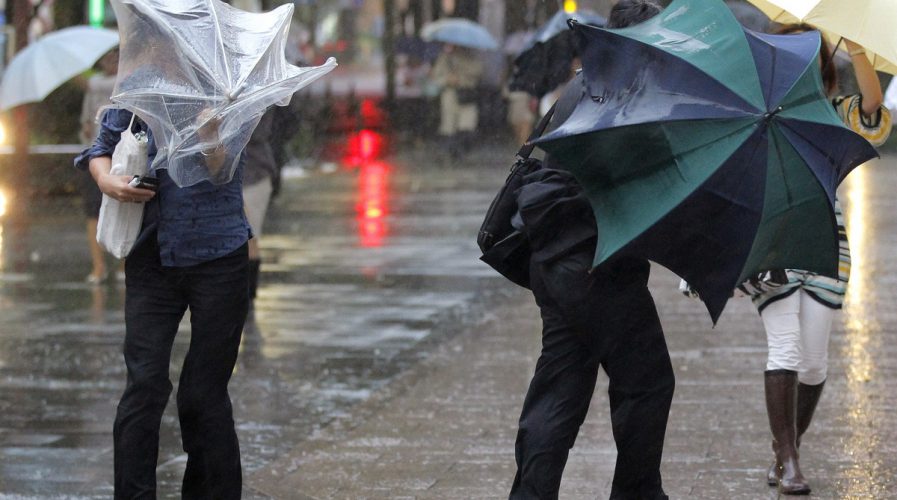
A new wind turbine could harness strong wind energy from Japan’s typhoons. Pic: AP
New wind turbine design could harness 50 years of power from Japan’s typhoons
THE energy from one typhoon could power Japan for 50 years, according to a Japanese engineer who has designed a wind turbine robust enough to harness power from a typhoon.
Engineer Atsushi Shimizu has invented the world’s first typhoon turbine. The power harnessing device is shaped like an egg beater and robust enough to withstand a typhoon.
“For decades, Japan has brought in European-style wind turbines, not designed for typhoon zones, and installed them with no careful consideration — they’ve broken almost entirely,” Shimizu told CNN.
SEE ALSO: Veolia’s Emmi Kaipio: Encourage eco-friendly attitudes through sharing economy
Conventional wind turbines are not built to withstand typhoons or extreme weather events.
In 2013, Typhoon Usagi resulted in eight wind turbines collapsing in China’s Honghaiwan wind farm, in eastern Guangdong, according to Wind Power Intelligence.
Because of this, Japan has opted for solar power over wind power but wind power has the potential to produce more energy in Japan, says Shimizu.
According to the Atlantic Oceanographic & Meteorological Laboratory a mature typhoon produces a level of kinetic energy “equivalent to about half the world-wide electrical generating capacity”.
Japan could use a new reliable energy source as it currently imports about 84 percent of its energy needs since scaling down its nuclear energy program after the Fukushima Daiichi nuclear disaster in March, 2011. The disaster caused by an earthquake and tsunami created widespread mistrust of nuclear power after local communities had to be relocated due to radiation risk.
An average of 2.6 typhoons per year have made landfall on the four major islands of Japan, since 1951 when records began. A record 10 made landfall in 2004.
Inventor Shimizu founded green technology company Challenergy in 2013 and was subsequently granted funding to invent the typhoon-resistant wind turbine.
The team designed an omni-directional vertical axis that is able to withstand Japan’s unpredictable wind patterns.
a typhoon-proof wind turbine which in one typhoon produces enough energy to power Japan for 50 yrs! https://t.co/mCkWGjhG6a via @slashgear
— Tony Clarke ☮ (@tonyclarkeuk) October 2, 2016
Tightening the center rod of the turbine means engineers can adjust the speed of the blades to ensure they don’t spin out of control in a storm.
During testing in July 2015 in Okinawa, where the first prototype is located, the turbine achieved 30 percent efficiency, slightly short of propeller-based turbines which typically achieve 40 percent efficiency.
“I want to install our wind-power generator at the new National Stadium,” Shimizu told CNN. “Or on the Tokyo Tower, because the Eiffel Tower installed a wind-power generator last year at the time of the COP21 (climate summit).”
READ MORE
- The criticality of endpoint management in cybersecurity and operations
- Ethical AI: The renewed importance of safeguarding data and customer privacy in Generative AI applications
- How Japan balances AI-driven opportunities with cybersecurity needs
- Deploying SASE: Benchmarking your approach
- Insurance everywhere all at once: the digital transformation of the APAC insurance industry
